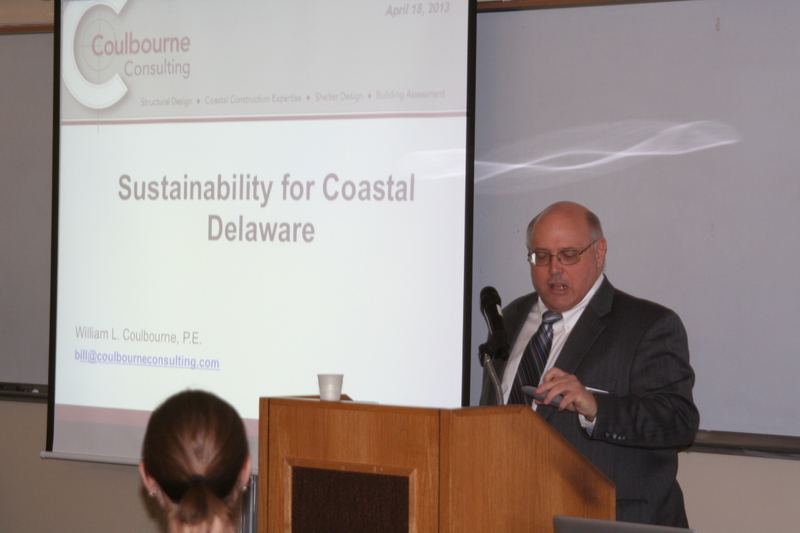Citizens work to adapt to changing world

Efforts to bring together environmental, economic, social, spiritual, land use, architecture, infrastructure, healthy living and other aspects of continued life on Earth are difficult enough.
The challenge ahead is understanding how to accomplish those in the face of climate change, sea-level rise, carbon dioxide emissions, energy consumption and other problems.
People representing disciplines such as healthcare, architecture, ethics and public policy, structural engineering, and land use, met April 18 at the Virden Conference Center in Lewes to discuss what citizens and government must do in a changing world so that generations ahead will be able to survive and prosper.
About 35 people attended the conference.
“Climate change has arrived; it’s already in Delaware,” said panelist John Sykes, president of Delaware Interfaith Power & Light. He said in Chicago last year, 700 people died because of heat exposure.
“Heat kills more people in a year than tornadoes or hurricanes, but heat is the silent killer. You don’t hear much about those deaths,” Sykes said.
Delaware Interfaith Power & Light represents 17 congregations serving 10,000 souls, Sykes said.
He said the organization helps churches lower energy costs using climate resistance methods such as lowering temperatures in houses of worship when not in use and turning off lights.
Sykes said the organization has developed and tested a heat-health warning system, and is working with state and local government to implement it.
He said 30 years ago when Apollo 13 was on its way to the moon, astronaut Jack Swigert said, “Houston, we have a problem here.”
“What he was actually saying was they had a sustainability problem,” Sykes said. An oxygen tank aboard the Apollo 13 capsule exploded, causing problems with the spacecraft’s water and air supply and its carbon dioxide removal system.
“On spaceship Earth, we also have a sustainability problem,” Sykes said.
“We try to get people to know there are things they can do. We help those in the community who can’t help themselves,” he said.
Panelist William Coulbourne, a structural engineer and FEMA mitigation policy advisor, said if Hurricane Sandy had hit the Delaware coast, conditions here would probably be like they are along the New Jersey coastline.
He showed a beachfront home that had been pushed off its foundation by wind and waves, still sitting in water six months after the storm.
“It takes time to rebuild after these storms. If it had hit Lewes do you think we’d be sitting in this building right now? No,” Coulbourne said.
He said Sussex County uses an outdated building code, and many new structures would barely survive a Category 1 hurricane, with sustained winds of 75 mph.
Coulbourne said future beachfront home disasters have continued to be built in this area following 1962’s destructive storm. “Here’s Fenwick Island then,” he said showing an aerial photo from 1962, “And here it is more recently,” he said, showing an aerial photo from 1994 indicating beachfront housing growth over more than 30 years.
“It’s not a matter of if; it’s a matter of when,” he said about the next storm to hit the Cape Region.
The second day of the conference was scheduled April 19, at the Clayton Conference Center, University of Delaware, Newark.
Thomas Powers, director, UD Center for Science, Ethics and Public Policy, hosted the conference; Collin O’Mara, secretary of the Department of Natural Resources and Environmental Control was among the speakers.






















































